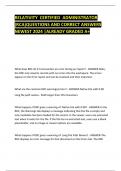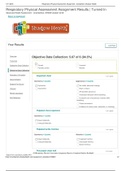College aantekeningen
Very well structured lecture notes (all 10) including many case studies (answers) - Marketing Strategy
- Instelling
- Erasmus Universiteit Rotterdam (EUR)
Very well structured lecture notes of all 10 lectures. Complete overview of course material including case studies of LGE, TomTom, New Coke, Cialis, Danone, Renova, etc... All I needed for my exam was this document.
[Meer zien]













